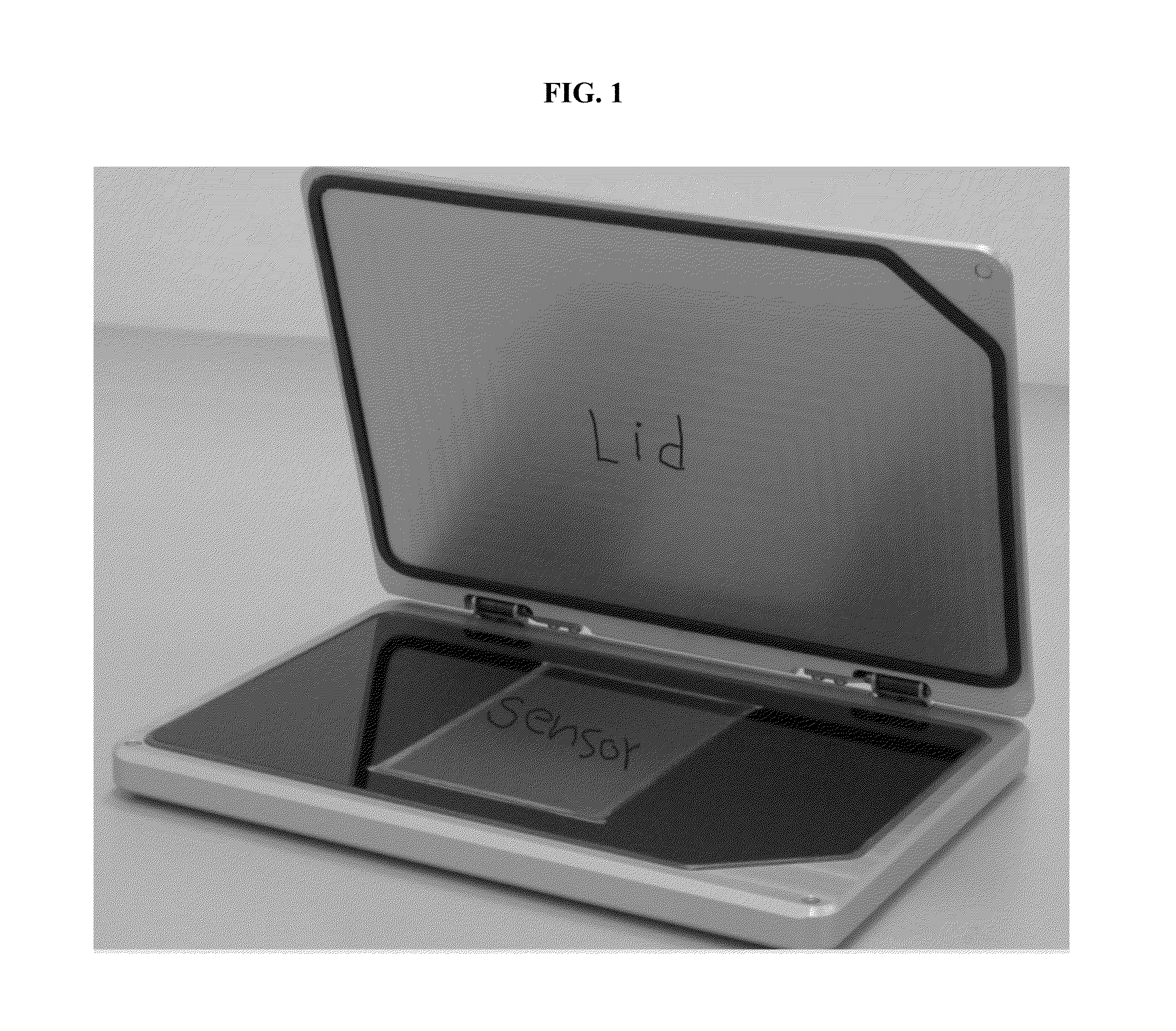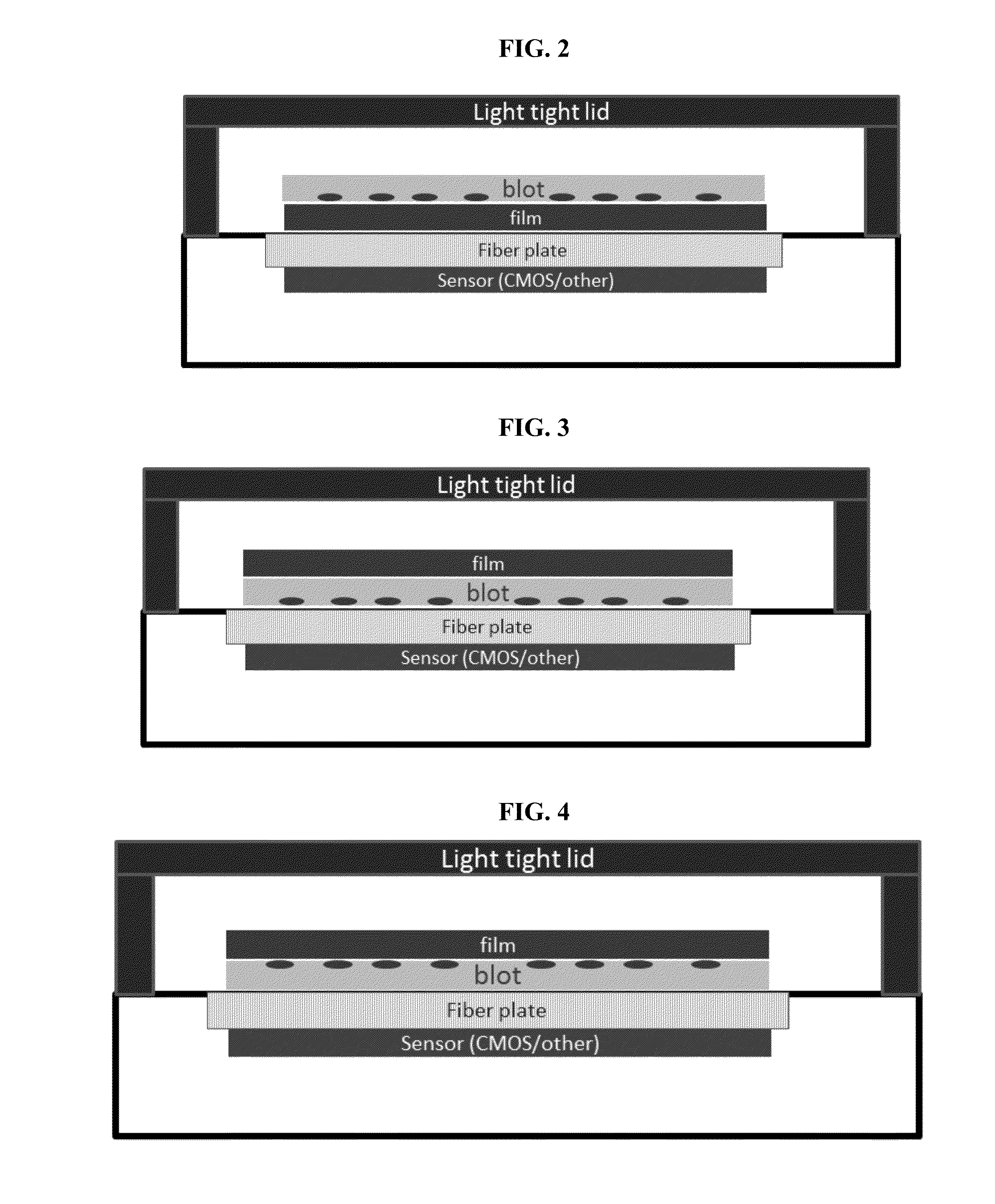Contact imager
a contact imager and imager technology, applied in the field of contact imagers, can solve the problems of inability to obtain the results of a second or third exposure, not quantitative, distorted or difficult to view, etc., and achieve the effect of more accurate and sensitive signal detection
- Summary
- Abstract
- Description
- Claims
- Application Information
AI Technical Summary
Benefits of technology
Problems solved by technology
Method used
Image
Examples
example 1
Configurations for Use of Single-Sensor Device
[0063]Examples of how the single-sensor device can be used are shown in FIGS. 2-4.
[0064]Both the film and the blot membrane are placed one on top the other inside the imaging cassette. The film can be placed below the blot (relative to the sensor) or above, as shown in FIGS. 2 and 3, respectively.
[0065]If the film is placed between the sensor and the blot (FIG. 2), light emitted from the bands on the blot has to pass through the film before it reaches the fiber face plate. While the light travels through the thickness of the film it can scatter slightly (depending on film thickness) leading to some degree of loss in image quality of the digital image (e.g., resolution), but obtaining maximum quality on the film image. This can be corrected with sharpening algorithms for the digital image.
[0066]If the blot is placed directly on the fiber plate with the sample side facing down (FIG. 3), the digital image would achieve maximal quality while...
example 2
Configurations for Use of Dual-Sensor Device
[0067]Examples of how the dual-sensor device can be used are shown in FIGS. 5-7.
[0068]FIG. 5 shows the blot sample side down on the fiber plate of the primary sensor and closed lid carrying the second sensor and fiber plate. Film can also be included with the dual-sensor device, as shown in FIGS. 6 and 7.
example 3
Effect of Sample Membrane Placement on Signal
[0069]A potential complication is interference of a membrane with signal, where the labeled analyte is on one side of the membrane and the sensor and / or film is on the other (non-analyte) side of the membrane. To determine if this would be an issue, we prepared a single membrane (8 cm×4 cm) and blotted with a dilution series, as shown in FIG. 8. The membrane was cut into identical halves, one placed in an imaging cassette with labeled analyte (sample) side up facing the film, the other placed in the imaging cassette with labeled analyte side down facing the fiber plate and sensor.
[0070]The membrane was developed using three different substrates: Westar® Supernova, Supersignal® West Femto, and Clarity™ substrates. The results are shown, respectively, in FIGS. 9-11.
[0071]The results show that the orientation of the membrane (sample-side up or down) has little effect on either digital or film images, especially at the higher concentrations.
[...
PUM
 Login to View More
Login to View More Abstract
Description
Claims
Application Information
 Login to View More
Login to View More - R&D
- Intellectual Property
- Life Sciences
- Materials
- Tech Scout
- Unparalleled Data Quality
- Higher Quality Content
- 60% Fewer Hallucinations
Browse by: Latest US Patents, China's latest patents, Technical Efficacy Thesaurus, Application Domain, Technology Topic, Popular Technical Reports.
© 2025 PatSnap. All rights reserved.Legal|Privacy policy|Modern Slavery Act Transparency Statement|Sitemap|About US| Contact US: help@patsnap.com



